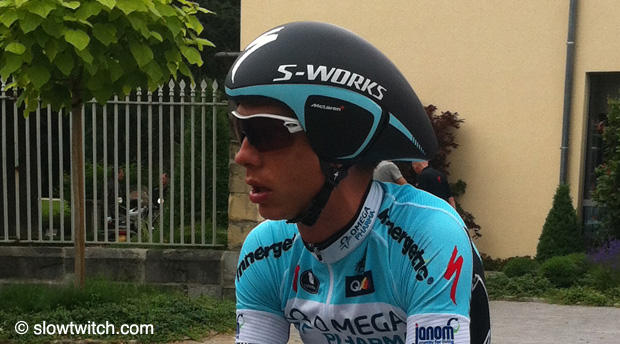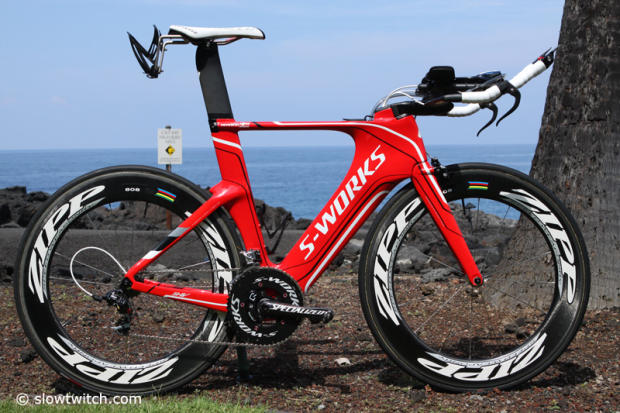Specialized accessories 2013
This article is about Specialized. I find it interesting that a company with such a name (Specialized) seems to lack a specialty. What is their strong(est) suit? Is it bike frames? Complete bicycles? Among those – are we talking about road bikes, triathlon bikes, mountain bikes, kids’ bikes? Or what about their extensive line of accessories – helmets, shoes, tires, inner tubes, water bottles, clothing, bottle cages, bar tape, saddles, cycling computers… did you know they even make a couple dozen types of gloves?
I think the consultants in the movie Office Space put it best: “What would you say… ya do here?”
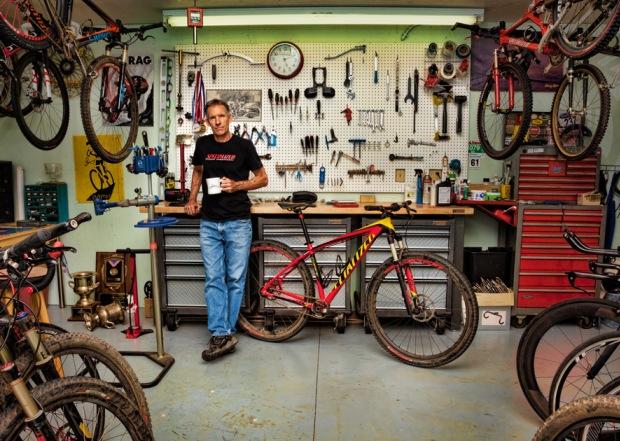
I poke fun because I like Specialized. They make good stuff – and a LOT of it. In my view, they exist as the only US bike brand other than Trek that can single-handedly stock an entire bike shop with their own brand of… everything. For dealers, this can be a blessing and a curse. On the positive side, they have a one-stop shop for nearly anything they need. If they place most of their orders with a single vendor, they will tend to get better pricing (due to the higher volume of product being moved).
On the bad side, this can limit the retailer’s options. If you want good pricing, or even the opportunity of selling a big line like Specialized or Trek, they’re going to want your full commitment. They’re not going to let the shop right next door to you carry the brand. That cost in sales opportunity on the manufacturer’s part comes with a price for the shops that DO carry their product. You must buy X amount of complete bikes, and Y amount of accessories per year. If the retailer spends all of their money satisfying this minimum order, there is none left to go around for smaller, unique products from other vendors. Such is life.
With a product line that is so large and diverse, we cannot realistically review everything in one shot. In this article, we’ve chosen to focus on their 2013 road and triathlon helmet line, along with a quick look at their high-tech Purist water bottle technology. Shall we?
Specialized road helmets
For being a bike company, Specialized has a surprising competence at making helmets. They’re even better, in my opinion, than a couple brands that only make helmets.
The thing to understand with all helmets is what you’re paying for: appearance and weight (aero helmets obviously bring in a third dimension). That’s pretty much it. All helmets must meet the safety standards of the country in which they’re being sold (in the US, that means meeting CPSC specifications). A more expensive helmet isn’t safer than a cheap one. That being the case, don’t worry if you’re on a beer budget – your noggin will be safe.
Specialized starts their road line with the Echelon, at $65.
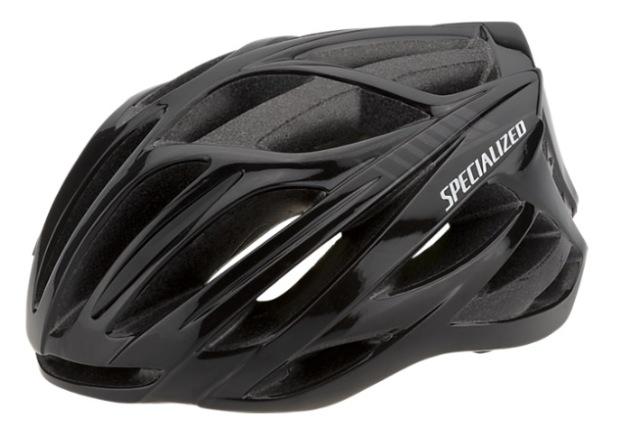
Three sizes, good price, and you’re done.
Above that, you’ve got the Propero II at $110, and presumably a few grams lighter (weights are not generally published until you get to the top-end offerings from any given company).
Move up one notch past the Propero II, we have the S3:
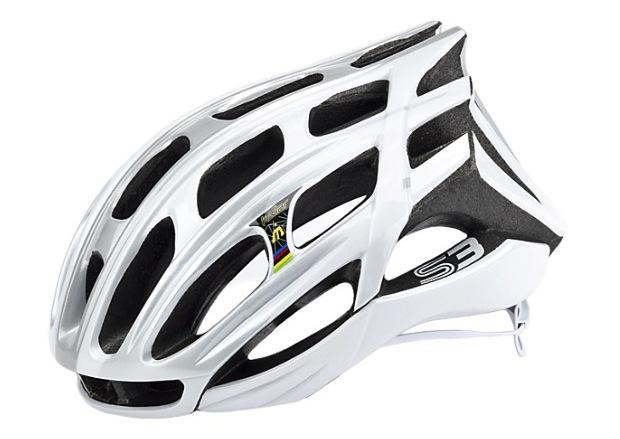
This helmet looks strikingly like their top-end Prevail helmet. It has the same Mindset retention system. At 242 grams, it is only 33 grams heavier than the Prevail (the weight of approximately one healthy sneeze). Even better – it costs almost $100 less, at $160. If it was my money on the line, I’d look long and hard at the S3.
Lucky for me, however, my job is to test and write about this stuff, and Specialized sent the cream of the crop, the Prevail:
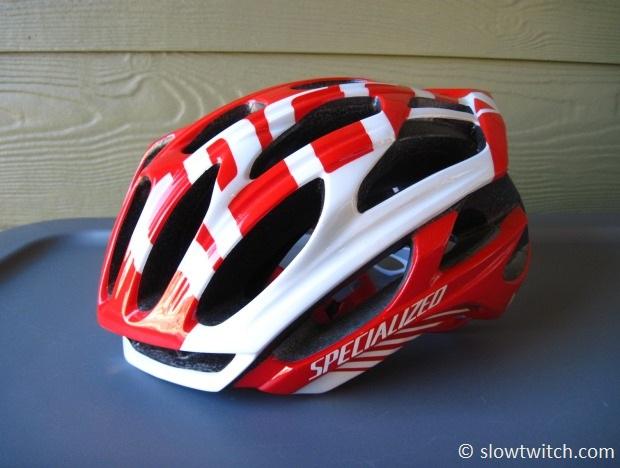
This helmet officially lives in the ‘crazy light’ category, at a mere 209 grams. For reference, that’s about the same as 6 gel packets. Price is $250, and there are three sizes available: Small (51-57cm), Medium (54-60cm), and Large (57-63cm). That’s a generous range within each size, and the total range is among the best in the industry.
The Prevail is – to me – a modern classic. I remember watching Peter Reid (a long-time Specialized athlete) ride in Kona with what was effectively the older version of this helmet. The helmet matched his kit that matched his bike that matched his wheels. It had the characteristic giant forehead vent, like the current Prevail:
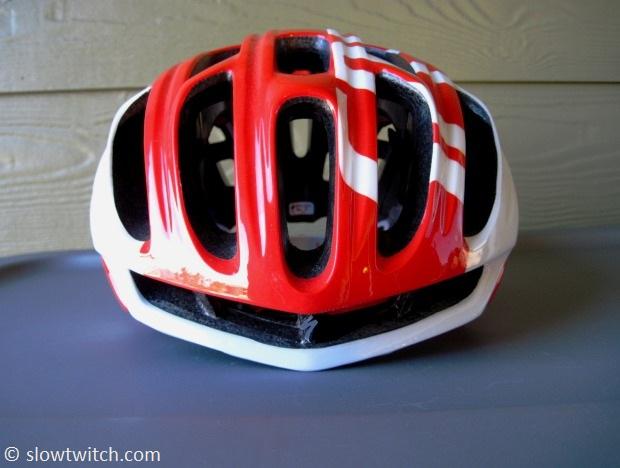
While I don’t think it was the helmet itself that made Peter so fast, he was known for his attention to detail in all aspects of equipment (as an aside, I recall him being one of the first big triathletes to use the then-revolutionary Campagnolo 10-speed equipment; before any other components companies made 10-speed).
I actually had a 2011 version of the Prevail, long before my official testing started for this review. What do I think of the helmet? It’s definitely light; easy on the neck muscles for aero position riding. While helmet fit is individual, I found the comfort to be good. Ventilation seems better than average, so this is a great helmet for races that are simply too hot for an aero lid (or if you tend to be prone to overheating in general). The Prevail definitely sits high on the head; whether you like that appearance is up to you.
The interior features a generous forehead pad that aids in comfort:
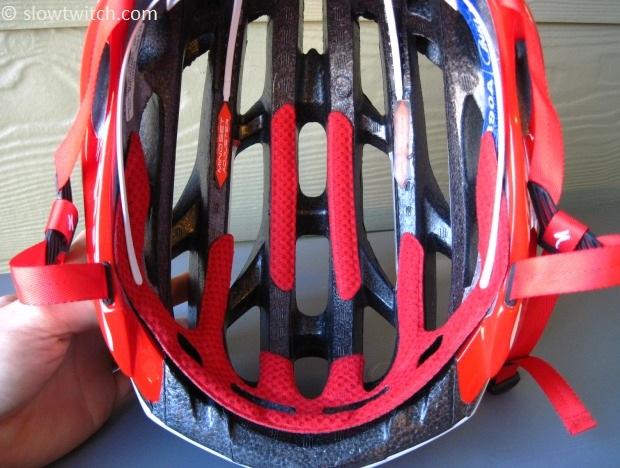
The only negative I could find is unfortunately a common one in modern helmets from many manufacturers: Lack of ability to hold strap adjustment. Everyone wants lightweight stuff, so manufacturers are paring down everything – including helmet straps and buckles. The Specialized buckle looks similar to most other manufacturers:
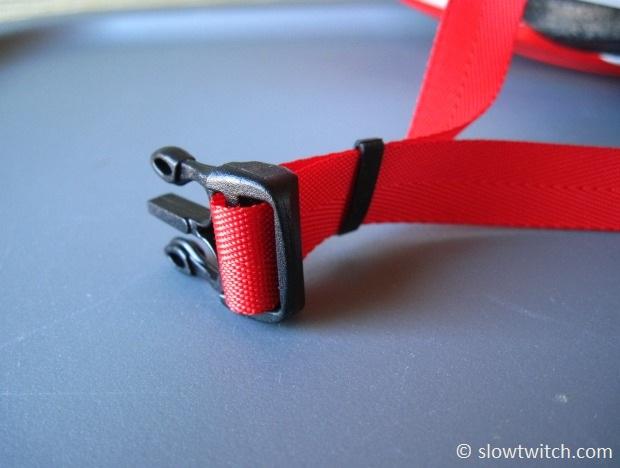
I’ve found that this tends to loosen over the course of a ride. I simply got in to the habit of checking the strap tightness before every ride, and snugging it down as necessary. It’s a quick fix, but is annoying to have to do every time.
Specialized aero helmets
There is one Specialized product that I couldn’t wait to try – the big and bad TT2:
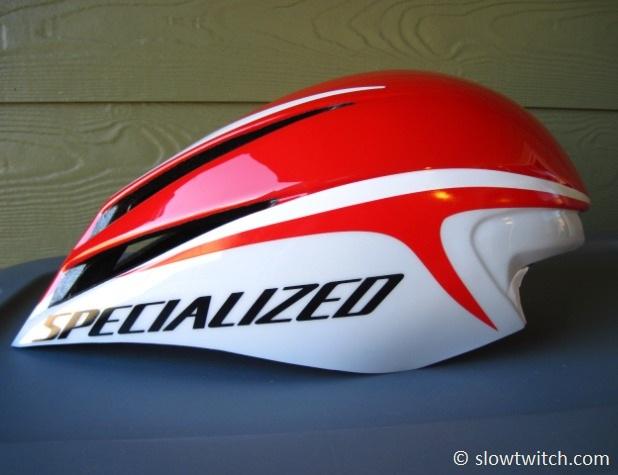
Before trying it, the TT2 was always one of my favorite aero lids out there, based on appearance alone. It’s long, sleek, and tends to look good on just about anyone and any bike position.
Aside from that, the specs look good. Its weight, at 380 grams, is certainly heavier than the featherlight Prevail, but not out-of-this world. Price is $275; you’ve got to pay to play. There are two sizes: XS/Sm (52-58cm), and Md/Lg (55-61cm).
I was eager to get the TT2 on my head to see how comfortable it was. It certainly looked racy; would it feel hollow and harsh on the inside? With its low ‘ear flaps’, would it be noisy? What about ventilation? Surely that large front vent would help; not to mention the four generous rear vents…
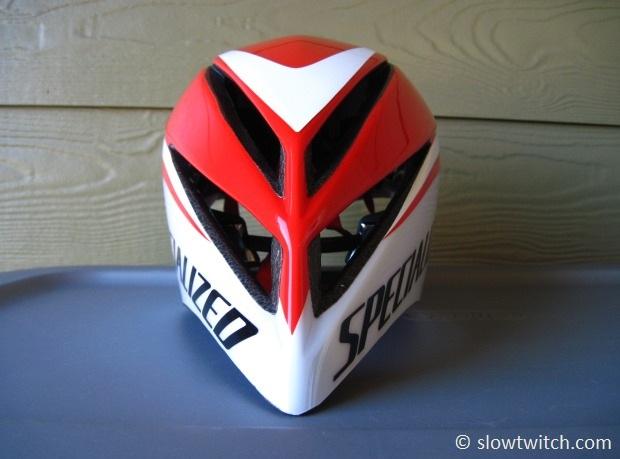
In fact, the only strange part of the helmet was actually putting it on. The ‘ear flaps’ are low, but somewhat flexible. If you race only cycling time trials, you’ve got all the time in the world to put your helmet on, so that’s no big deal. For triathlon, however, time is of the essence in transition. This turned out to be a not-insurmountable problem. Just practice putting it on a couple dozen times, and you’ll get faster. My strategy turned out to be this:
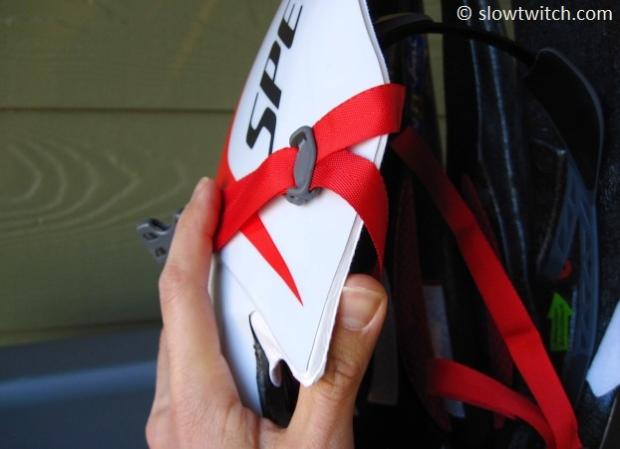
I use my forefingers to hold the straps against the outside of the helmet, and my thumbs to slightly flex the ear flaps. Don’t rush it; smooth and steady wins the race.
I also found that it was best to pre-adjust the retention system before the race. With such a long tail in the way, it can be difficult to adjust the helmet’s size in a hurry. It is actually different than their standard road helmets’ retention system; no dial, only two clicking adjusters:
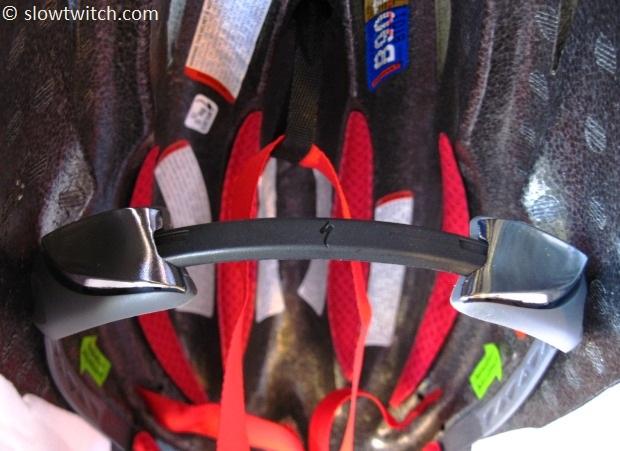
Once the helmet was on my head, I found it to be surprisingly comfortable. Perhaps more comfortable than the Prevail. It hugs your head nicely, and just feels fast. It didn’t seem to bounce around on rough roads. While I haven’t ridden the thing in Kona, I found the ventilation to be quite good; better than I expected. I did ride the helmet in one Iron-distance race, but it turned out to be a cloudy day with relatively cool temperatures.
The interior features deep channels, presumably for promoting airflow on the top of your head. Note the plethora of warning stickers and the CPSC sticker in the rear.
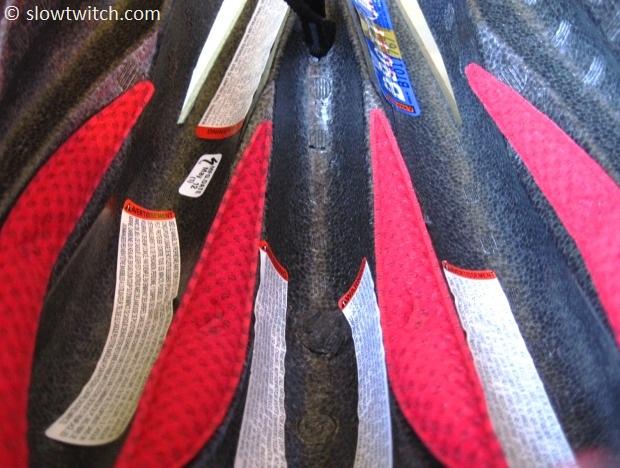
One other thing is worth noting: the TT2’s length. It’s long. Really long. My Md/Lg size measured 17.5” (45.5cm) from end to end. That’s great, because it makes the helmet look cooler than Laurence Fishburne’s leather jacket in The Matrix. But – it can also be bad, because it takes up a ton of space while traveling. Specialized supplies a very nice helmet case with the TT2:
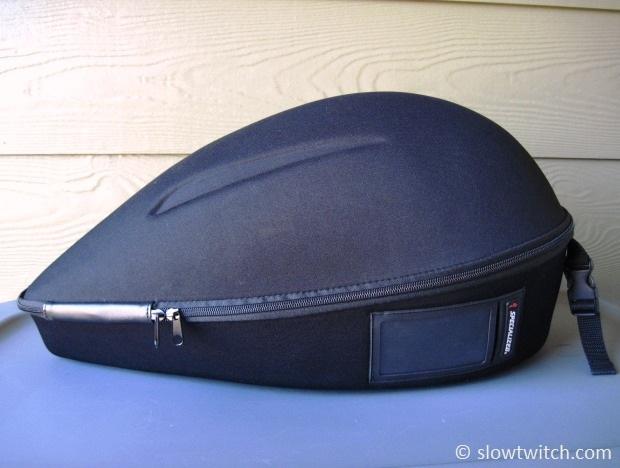
That nice case adds another few inches to the deal, making it nearly two feet long. Keep that in mind if you plan to fly with the TT2; it could very well be an entire piece of carry-on luggage. Or, if you put it in a suitcase, it might take up half (or more) of the space inside.
You may have also heard that Specialized has a new aero helmet, dubbed the S-Works McLaren TT. Developed in conjunction with the tech-experts at McLaren, this thing is said to be lightning fast. It weighs 350 grams, and is available in Small and Medium only (big noggin cone-heads like me are out of luck). Well, ‘available’ in the sense that they are only available to the highest-caliber athletes on the Specialized sponsorship roster at this time. Sorry – you can’t have one (yet).
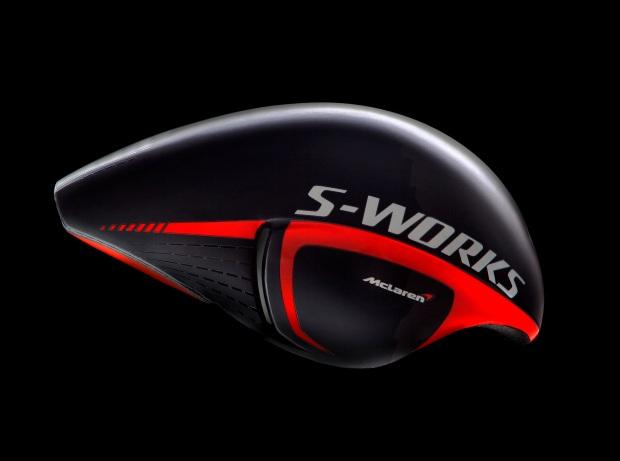
What makes the McLaren TT so special? We’ve seen some of the numbers, and we’ve written about this helmet before (linked at the bottom of this article). I inquired with the dueling-Chris’ at Specialized (aerodynamics expert, Chris Yu, and PR/media guru, Chris Reikert) for more information. What’s the story that we haven’t heard yet?
According to them, the key goal was really split in to two parts: 1) Overall speed / lowest drag, and 2) Not having their best results from #1 be limited to a specific yaw angle, back shape, or position.
They told me that – at the end of the day – you must pick a baseline configuration to work with (also called a ‘design point’). You must pick a single shape rider mannequin, set at a specific position, and on a specific bike. This is the only way you can reliably control your test. While other manufacturers might stop there, Specialized wanted a design that was versatile, as the real world is not a wind tunnel. We have aid stations and wind. We have 180 degree turns. We get tired, move around, and stretch. How do you accommodate this? Test over and over again, with small changes to your protocol. According to Chris Yu:
“Technically speaking, we wanted to broaden the optimal performance peak so when someone different than our test mannequin wears it (or holds their head in a different orientation) we can be [confident] that the helmet isn’t all of a sudden a stinker. And that’s not too much of an exaggeration; aero helmets can be quite sensitive and small positional changes can result in drastic performance changes (from decent, to one of the worst in class).”
They had my interest. How much faster are we talking here? Compared to the TT2, they say the McLaren saves 0.2 – 0.5 seconds per km (10-20 sec over 40km) – in the optimal position for each. As you move away from ‘optimal’, the savings tend to increase – up to 1 second per km, or 40 seconds per 40km ridden.
The scales confirm; weight is just a hair north of 350g:
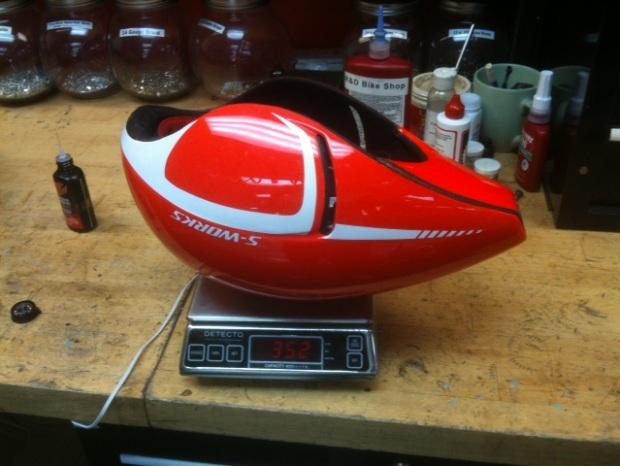
All that speed comes at a cost, however. Lots of dough? Well, there’s that. But – more importantly for us Americans, the helmet is not CPSC certified. The American helmet safety standards are more stringent than in Europe, which means our helmets tend to be thicker. Thicker means more frontal area… and unfortunately, a tendency towards poorer aerodynamic performance. You may have seen this helmet used in races such as the Hawaii Ironman, which is on US soil. How is that possible? Kona is still run under international rules, including helmet safety standards. It’s one of the only US-based races at which you can legally use the S-Works McLaren TT.
Time and product demand will decide whether we end up seeing a US-legal version of this helmet, or a size bigger than Medium. For now, we can only watch the pros race it.
Specialized Purist bottles
Bottle reviews? Boring, right? While it’s certainly no 2013 Shiv or high-tech dual suspension mountain bike, I think Specialized has a very unique product in their water bottle technology that is worth a closer look.
Dubbed “Purist”, this is some very special plastic. It’s BPA-free, food-grade, and the graphics are printed with a non-solvent base that gets UV-cured. They say it’s “As pure as drinking from a glass, with all the advantages of a flexible bottle.”
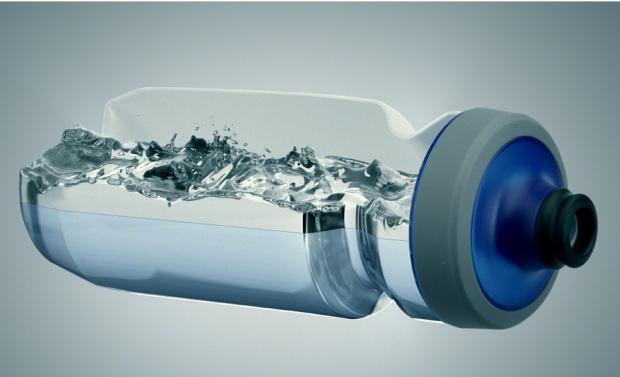
In simple terms, their goal was to have a bottle that is completely non-toxic, and doesn’t make your beverage taste like plastic, or the previous liquid that was in the bottle. How did they do it? Silicon dioxide. Not being an A-student in chemistry class, I’ll let Specialized explain it in their own words:
“Silicon dioxide is an inert compound made from two of the most abundant elements in the earth’s crust: silicon (not to be confused with the chemical “silicone”) and oxygen. When combined they form silicon dioxide (SIO2).
Occurring naturally in plant-based foods such as apples, oranges, cucumbers, and celery, silicon dioxide is an indispensable part of the food we eat. [It] is also found in nature as sand and quartz and is used in the production of glass beverage bottles and ceramics such as earthenware, stoneware, and porcelain. These properties make it an excellent barrier for a water bottle, providing a natural, safe shield, while delivering the pure taste only glass can offer.”
Science lessons aside, I found that the bottles really work as-advertised. In fact, they’ve become my go-to bottles for just about everything. Need to bring your breakfast to work after that 5:30 masters swim practice? Fill a Purist bottle with your milk (cow, soy, almond… or whatever ‘milk’ you drink), without fear of an everlasting stench if you accidentally leave the bottle in your car for a few days. Or fill them with sports drink for your next ride. Heck, fill a bottle with Grandma’s leftover gravy from your next holiday meal. I don’t care what you fill it with – and neither does the bottle.
There is one important practical implication I found – there are two styles of Purist bottles. The original styleis now called the Mo’Flo, and features a fairly standard-looking cap:
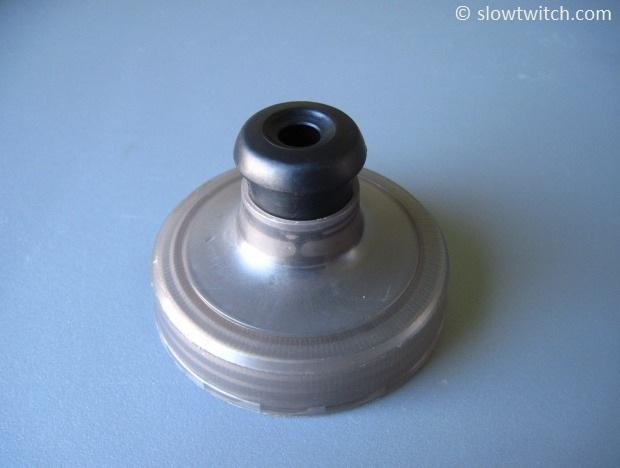
Open, squirt, drink. Easy enough.
The newer style is called Watergate, and has a unique one-way flowing cap. This photo details the Watergate in the foreground, and the Mo’Flo in the background:
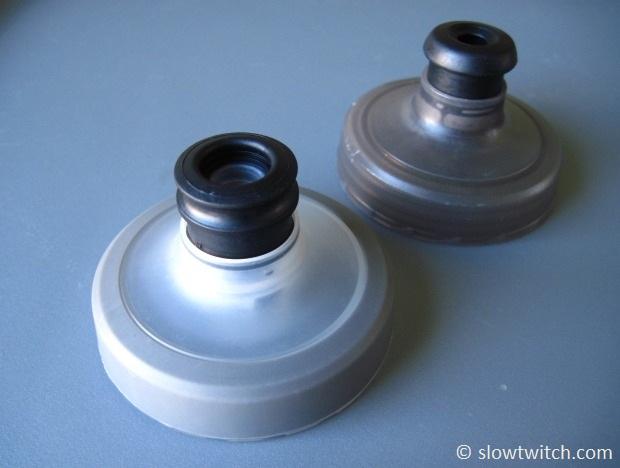
The Watergate is supposed to make it so you never have to open or close the top; leave it open and it won’t spill. The unfortunate caveat is this: Pulling the valve open in the first place can be difficult. Due to the shape of the bite valve and the tightness of its fit, I found it nearly impossible to open with my teeth. It requires two hands. Once it’s open, you’re set – you just need to do so before you start riding, or wait for a smooth patch of road. The older-style Mo’Flo bottles do not seem to suffer this problem; you can easily open or close the top with your teeth while riding.
Do I still use non-Purist bottles? Sure. But… it only happens if all my Purists are dirty (I only have a handful of them). Sometimes find a product that – to me – becomes a new standard of performance. I end up using it all the time, and tend to forget about it (and the fact that others might not have tried it, or even heard about it). Purist bottles are definitely one of those products.
We hope you enjoyed this look at a few of the key Specialized products that aren’t bicycles. There is surely much more in their line, beyond what we’re able to cover in one article. They have a host of tubular and clincher road tires (although they unfortunately no longer make the super-fast rolling Mondo Open Tubular). They have mountain bike tires. They have cyclocross tires, including one of the few tubeless-ready options, the Captain CX 2Bliss. There are many models of cycling shoes, including the Trivent (which I’ve owned two pairs of – and paid retail for). I personally hope we eventually get an American version of the McLaren TT, but for now, we have more than one good option in road helmets from Specialized.



